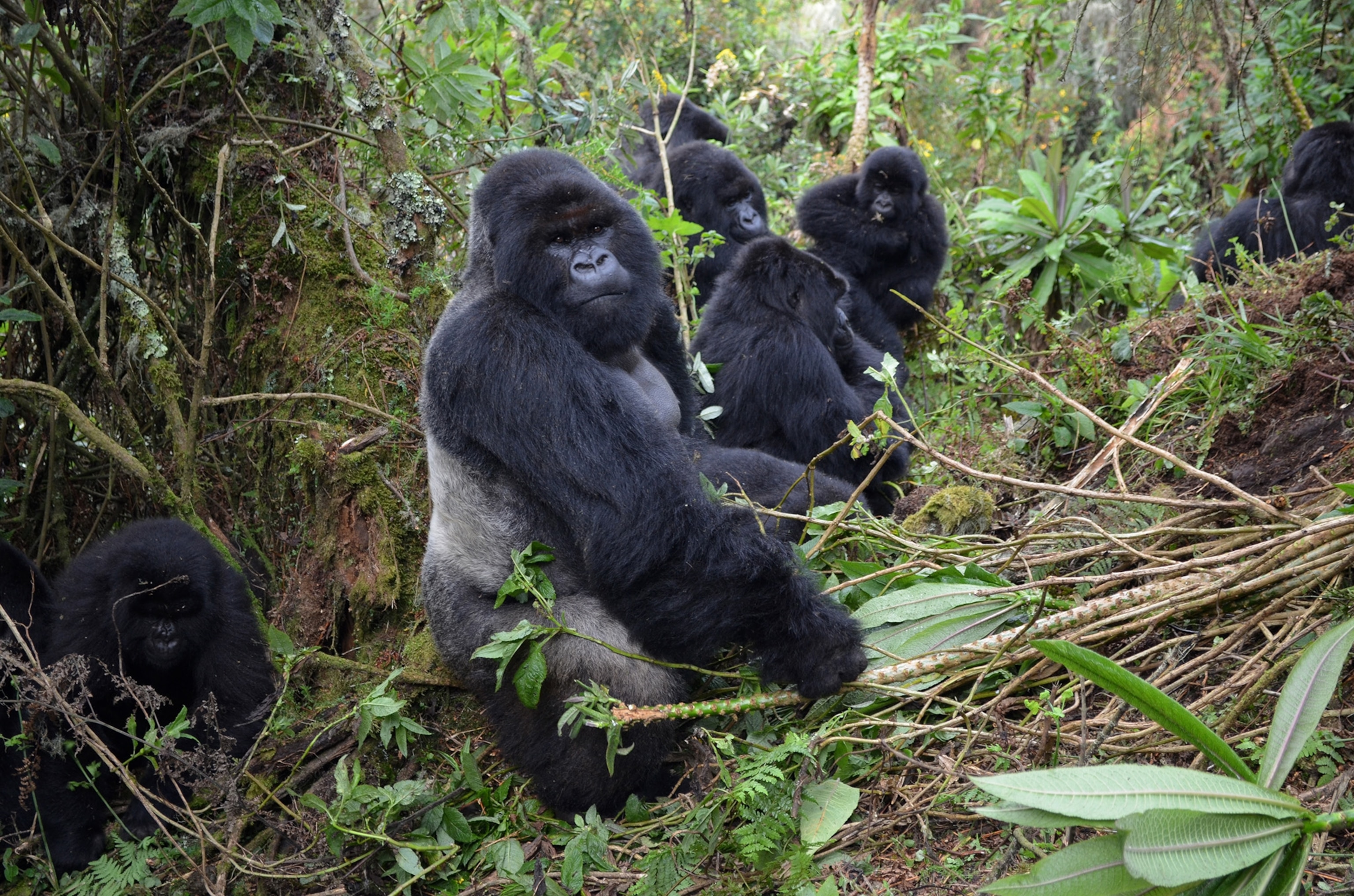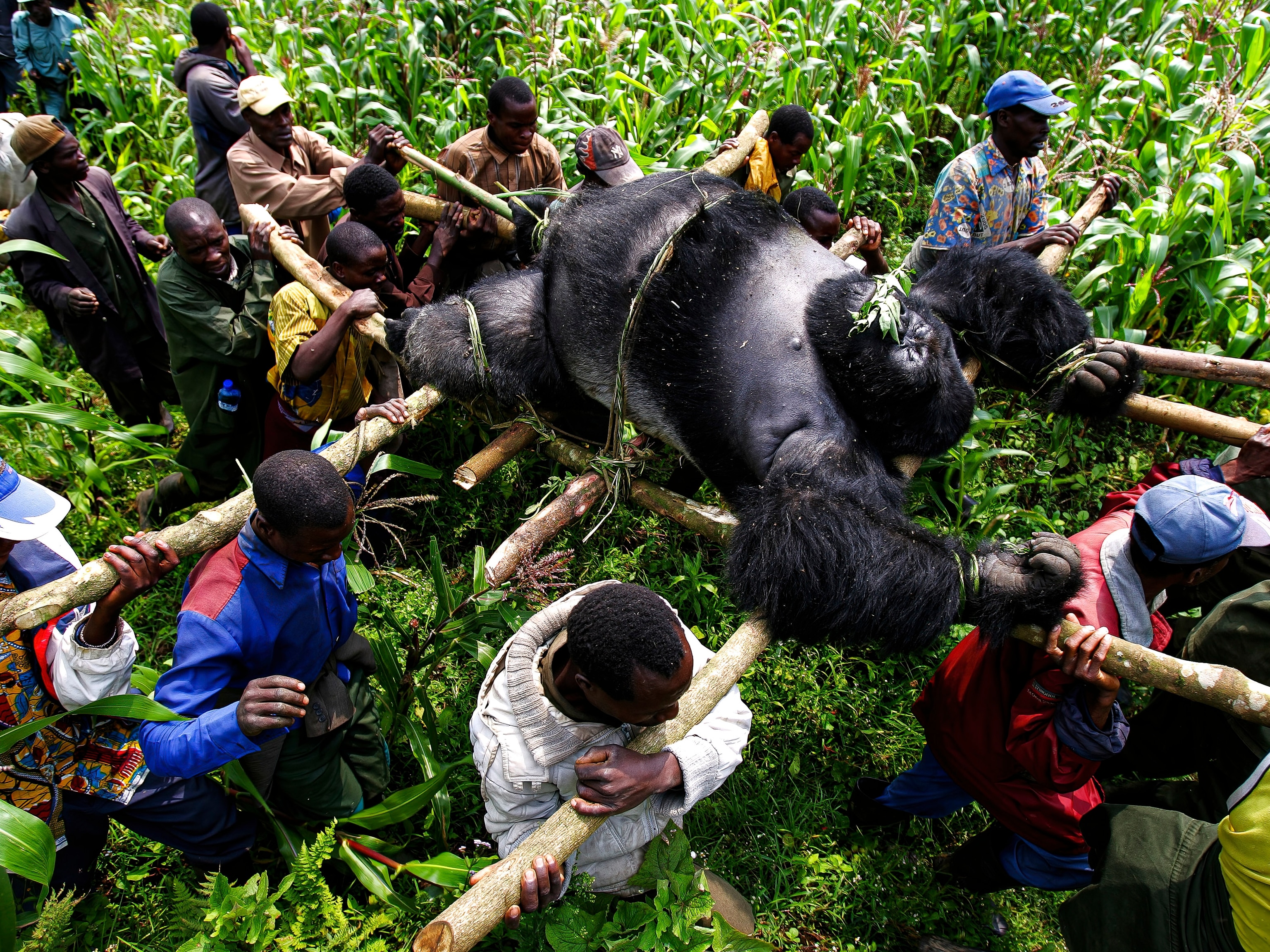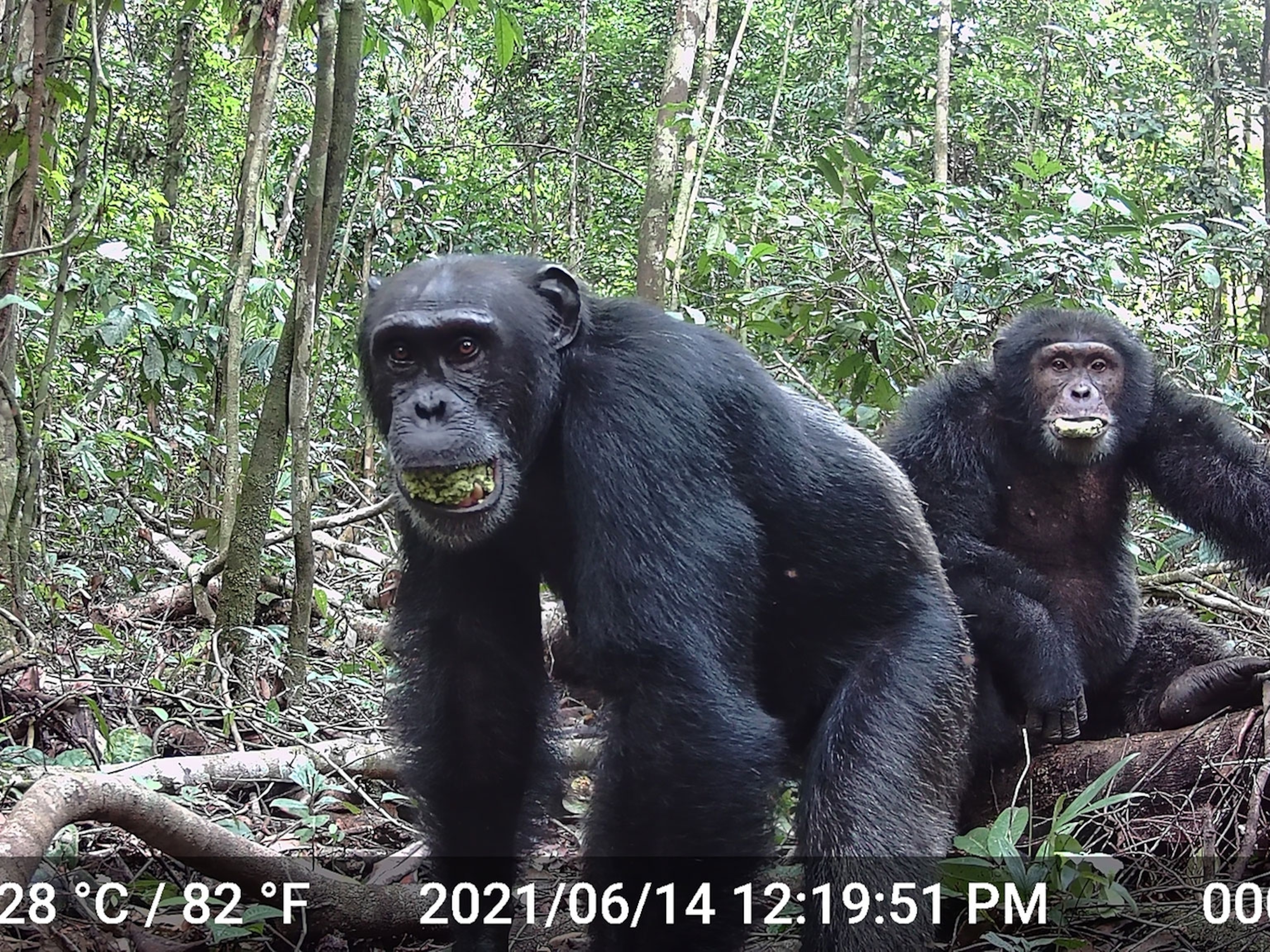Famous Dian Fossey Gorilla Presumed Dead at 38
Cantsbee, one of hundreds of apes that the scientist knew and studied, was an exceptional leader.
One of the last two mountain gorillas named and studied by Dian Fossey has disappeared and is presumed dead. His name was Cantsbee, and Monday would have been his 38th birthday.
Scientists don't believe poachers killed the silverback, as illegal hunting of the apes is now rare in Rwanda. Instead, the dominant male, which lived in Volcanoes National Park, likely succumbed to natural causes. (See "As Mountain Gorillas Bounce Back, Rwanda Names Gorilla Newborns.")
“Cantsbee is actually the longest living male that we have ever recorded,” says Tara Stoinski, president of the Dian Fossey Gorilla Fund, based in Atlanta, Georgia. The average age for this gorilla population is somewhere in the 20s.

Cantsbee was born in 1978, the same year Fossey founded the Digit Fund, a gorilla-preservation group. The Digit Fund was renamed in Fossey’s honor after she was murdered in 1985. Of the hundreds of animals Fossey observed personally, only one now remains—an elderly female named Poppy. (Read Fossey's 1981 National Geographic magazine article about the imperiled apes.)
“We’re coming to the end of an era,” says Stoinski, “where the gorillas that Dian knew and studied are now at the end of their life span.”
Impressive Leader
When Fossey, a legendary scientist and early pioneer of primatology, first began working with mountain gorillas in the 1960s, poachers had hunted the population down to just 250 animals.
Thanks in part to Fossey's advocacy and decades of anti-poaching patrolling led by the Dian Fossey Fund, those numbers have nearly doubled to 480 mountain gorillas in the wild. The species is still listed as critically endangered by the International Union for Conservation of Nature.
Cantsbee "is an amazing story for conservation,” says Stoinski. “What we see in his life is what’s possible when a concerted effort is made to protect these animals.” (Read Fossey's 1970 article in National Geographic magazine about making friends with gorillas.)
The animal was also an incredible leader. Cantsbee reigned as dominant male of his group for two decades, sired more offspring than any gorilla known to science, and assembled the largest troop any scientist has ever observed.
Most gorillas live in groups of no more than 10, says Stoinski. But in his prime, Cantsbee’s troop included a whopping 65 gorillas.
Softy Silverback
Those who knew him best say he had a soft side. Stoinksi remembers watching Canstbee care for a half dozen infants once while their mothers went off to forage. Cantsbee is also credited with raising one of his sons, Gicurasi, after the juvenile’s mother died at an early age.
Gicurasi has been slowly taking on a greater leadership role, and he'll likely become the dominant male.

Cantsbee’s name has a whimsical story. While observing the troop, Fossey had originally mistaken Cantsbee’s mother for a male. So when the scientist showed up one morning and found this supposedly male gorilla nursing an infant, Fossey apparently exclaimed, “It can’t be!”
This December will mark the 31st anniversary of Fossey’s murder—still unsolved—at her research camp on Mount Visoke. Her last journal entry remains as poignant as ever.
“When you realize the value of all life, you dwell less on what is past and concentrate more on the preservation of the future.”




